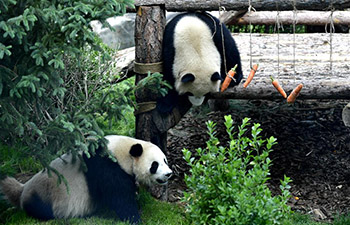BEIJING, June 21 (Xinhua) -- The Chinese Academy of Sciences (CAS) remains the top one among the world's leading academic institutions, and China held onto the second spot for the quality of research output in the Nature Index 2019 annual tables, the China Daily reported Friday.
The CAS is China's highest academic institution in natural sciences. The tables also show that China has 17 institutions ranking among the top 100 in the world, including Peking University, Tsinghua University and Nanjing University, an increase from 15 in 2018.
The United States, with 43 institutions in the top 100, remains the world's largest research power, ahead of China and third-ranked Germany.
China and Australia were the only two countries in the top 10 that have seen a positive growth in research output, with China rising by 17 percent compared with 2018.
The data suggest that chemistry, physical sciences, life sciences, and Earth and environmental sciences are China's strongest disciplines, said the newspaper, citing Yuan Lanfeng, an associate professor at Hefei-based University of Science and Technology of China in east China's Anhui Province.
"By looking at these data, we can see that China's overall scientific strength still lags behind the United States, but the trends show very clearly that China is progressing the fastest among all the major science powers," said Yuan.
Yuan said one reason for China's continued growth in technological strength is the sharp increase in its research and development budget.
According to the Organisation for Economic Cooperation and Development, China's gross domestic spending on R&D in 1991 was 13.4 billion U.S. dollars. That number rose to 442.7 billion dollars in 2017.
The Nature Index, which has been published annually since 2014, was released on Thursday and compiled by Springer Nature, one of the world's leading research publishers. It is influential in the evaluation of high-quality research output, and are based on the percentage of authors from the country or institution and the number of affiliated institutions per scientific article.
Springer Nature said that almost half of China's research articles in the Nature Index came from international cooperation in 2015 to 2017.

















